As of 01 July 2024, the population of the municipality of San Juan, including Filipinos in Philippine embassies, consulates and missions abroad was 17,291 persons based on the 2024 Census of Population (POPCEN).
The population for 2024 has increased by 928 persons from the population of 16,363 in 2020. It is also more than 2,437 persons compared with the population of 14,854 in the 2015 Census of Population. (Table 1)

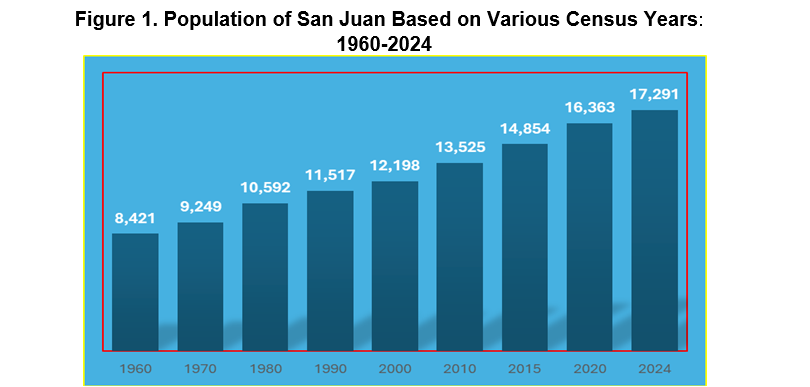
Sixty-four years ago in 1960, the population of San Juan was 8,421 persons. This population size is over one hundred percent of the population in the municipality in the 2024 POPCEN.
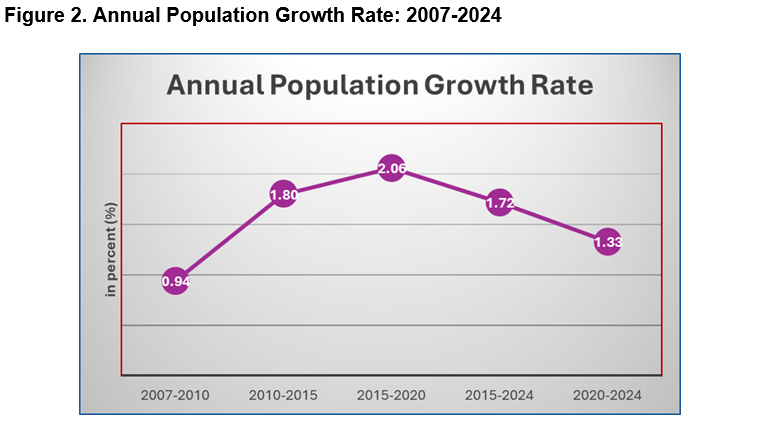
The municipality’s population growth rate (PGR) slowed to 1.33 percent annually from 2020-2024. The rate at which the municipality’s population grew from 2015 to 2020 was higher at 2.06 percent. The PGR from 2015 to 2024 was still higher than the 2020-2024 period at 1.72 percent.
With a total land area of approximately 44.37 square kilometers, the population density of the municipality of San Juan in 2024 was posted at 390 persons per square kilometer. This represents an increase of 21 persons per square kilometer from the population density of 369 persons per square kilometer in 2020. In 2015, there were 335 persons residing in every square kilometer of land. (Table 2)

The municipality of San Juan ranked third among the six municipalities in Siquijor province with 17,291 persons. It is composed of 15 barangays.
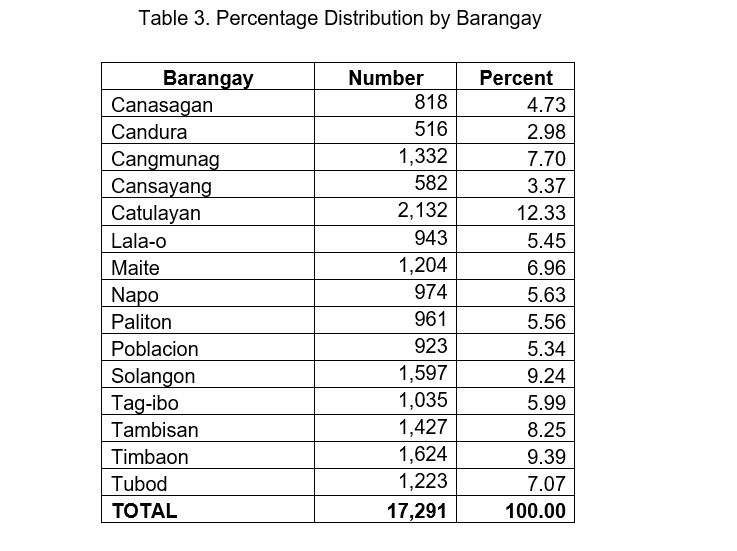
Out of the 15 barangays in this municipality, Barangay Catulayan was the most populous in 2024 with 2,132 persons followed by Barangays Timbaon and Solangon at 1,624 persons and 1,597 persons respectively. Table 4.
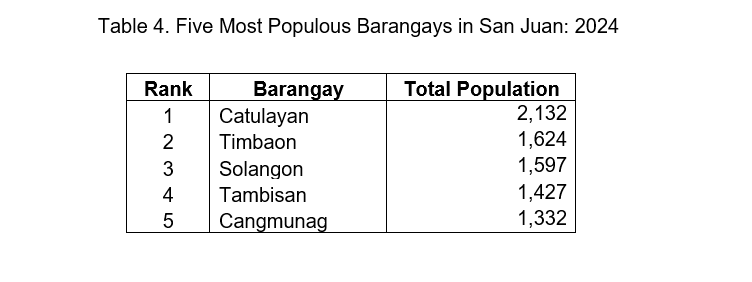
In 2024, Barangay Candura was the least populous barangay with 516 persons, followed by Barangays Cansayang and Canasagan with 582 persons and 818 persons respectively. Table 5.
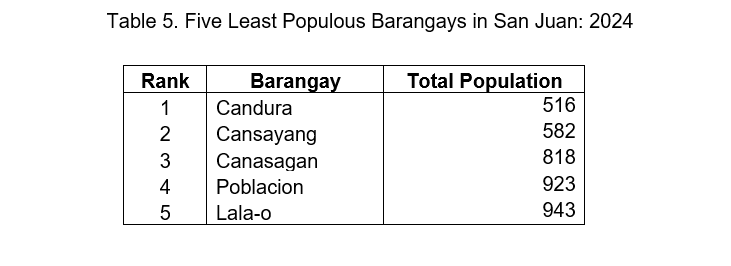
TECHNICAL NOTES
The most recent population data as of 01 July 2024 and statistical summaries on the population count and annual PGR for the Philippines and its regions, provinces, cities, and municipalities based on various censuses are available at: https://psa.gov.ph/statistics/population-and-housing.
The PSA extends its deepest appreciation to the public for their continued support and participation in the 2024 POPCEN. This census marks the 16th Census of Population in the Philippines since the first census in 1903.
DEFINITION OF TERMS
Household population
Household population comprises of persons who belong to a household.
Institutional Living Quarter
Institutional living quarter (ILQ) is a structurally separate and independent place of abode intended for habitation by large groups and individuals. Such a quarter usually has certain common facilities such as a kitchen and dining room, toilet and bath, and lounging area which are shared by the occupants.
Institutional Population
Institutional population comprises of persons who are found living in ILQs. They may have their own families or households elsewhere but at the time of the census, they are committed or confined in ILQ, wherein they are usually subject to a common authority or management or bound by either a common public objective or common personal interest.
Persons Included in the Enumeration
All living persons as of 12:01 a.m. of 01 July 2024 were enumerated.
Specifically, these were the following:
1. Filipino national permanently residing in the Philippines;
2. Filipino national who, as of 01 July 2024, is temporarily at the Philippine Sea or on vacation or business/pleasure trip somewhere in the Philippines and is expected to be back within six (6) months from the date of departure;
3. Filipino national who, as of 01 July 2024, is temporarily on vacation, business/pleasure trip or studying/training abroad and is expected to be back within a year from the date of departure;
4. Filipino overseas worker, including those on-board on oceangoing vessel, who is away as of 01 July 2024 but is expected to be back within five (5) years from the date of his/her last departure;
5. Philippine government official, military or civilian, including a Philippine diplomatic personnel and his/her family, assigned abroad; and
6. Civil citizen of foreign country who has his/her usual residence in the Philippines, or a foreign visitor who has stayed or is expected to stay for at least a year from the date of his/her arrival in the country.
(SGD) JOSELITO C. MAGHANOY
(Supervising Statistical Specialist)/
Officer-in-Charge

